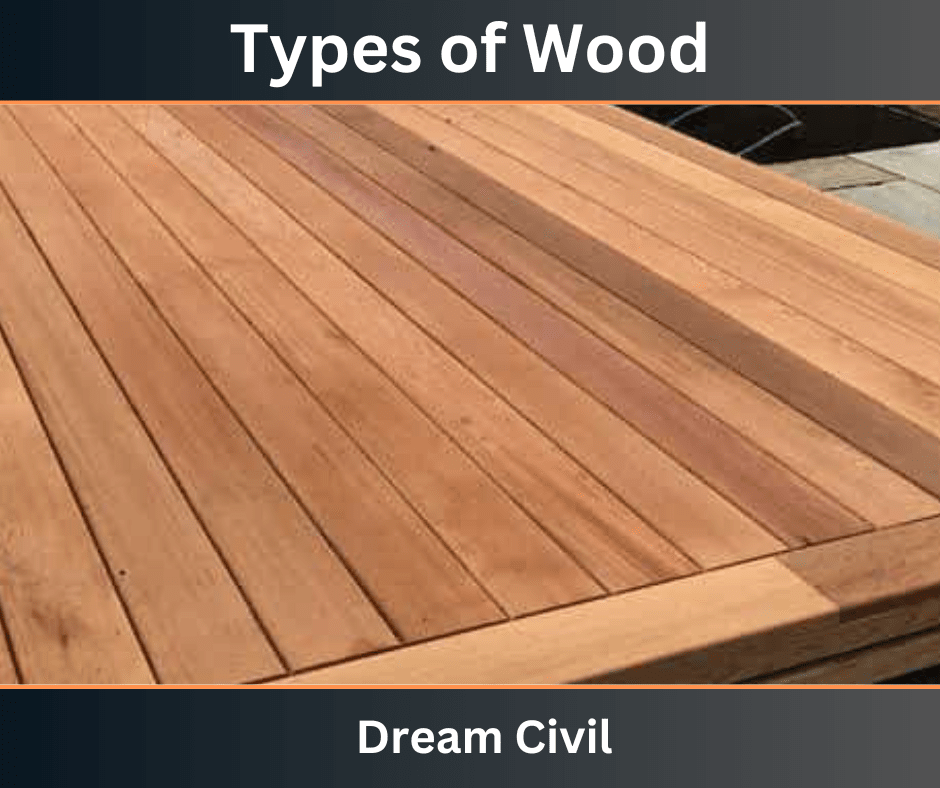Table of Contents
| In this article, we will discuss 38 types of wood with color, source, density, and uses. |
Woods are products made from trees. There are more than 60,000 types of trees in this world that have the ability to provide different qualities of wood.
Nowadays, wood is mostly used for decoration as compared to construction.
Wood has been replaced by steel and other materials in the field of construction.
1. Types of Wood

1. Akasa Wood
✔ Akasa wood is a type of heartwood and sapwood. It is straight-grained with grey-brown color.
✔ Akasa has been an extremely durable wood. Its density and hardness make it the perfect material for heavy use such as dining tables and dining benches in interior joinery, light structural work, flooring, utility furniture, and veneer for plywood, and turnery.
✔ Akasa wood is beneficial as interior wood. When properly cared these woods last long for decades.
Color: Deep brown
Source: Australian-Native Trees
Common Use: Furniture, floors, cabinets, etc.
Density: 700kg/m³ at 12-15% moisture content
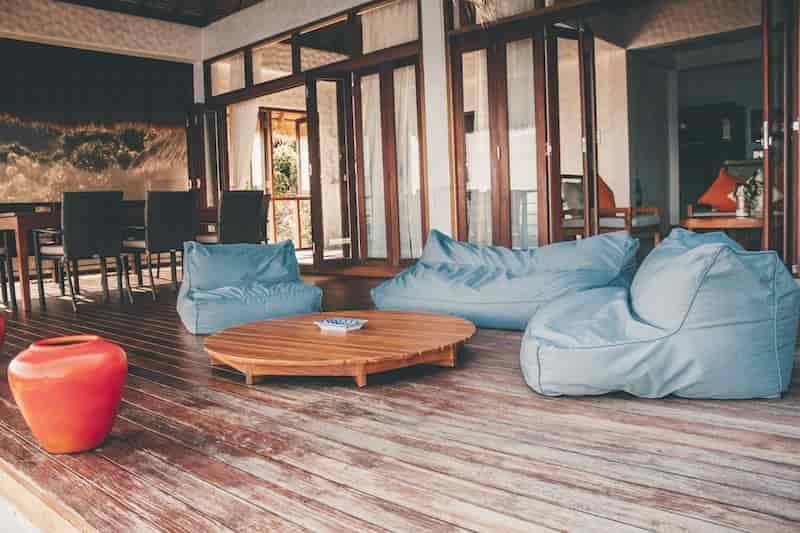
2. Ash Wood
✔ Ashwood is one type of light wood and it provides a distinctive luster when smoothed. Its structure is almost open grain and is reasonably hard-wearing. This wood can be stained to almost any color.
Color: Beige or light brown
Source: White Ash Tree
Common Uses: Furniture, floors, cabinets, etc.
Density: 1320 on the Janka scale

3. Balsa Wood
Balsa wood is the lightest and softest but is kept in a division of hardwood timber. It is a large, fast-growing tree native to the Americas. It is the sole member of the genus Ochroma. It is used for heat, sound, and vibration insulation.
Color: Pale reddish-brown
Source: Balsa tree
Common Uses: Buoys, rafts, surfboards, model airplanes, musical instruments, etc.
Density: 120-160kgm3

4. Bamboo Wood
In the field of construction, bamboo is usually used because it is cheap, strong, and fastly growing than other types of wood. As a result, it makes construction cheap.
Bamboo is a giant woody fast-growing plant having a hollow jointed stem with high compressive and tensile strength.
Bamboo has very strong fiber with compressive strength twice that of concrete and tensile strength near to steel. It can be curved without breaking due to the strong and flexible fiber present in it.
Because of these advantageous physical and strength characteristics, bamboo is suitable material for application in different types of structures and constructions.
Color: Rich golden
Source: Bamboo tree
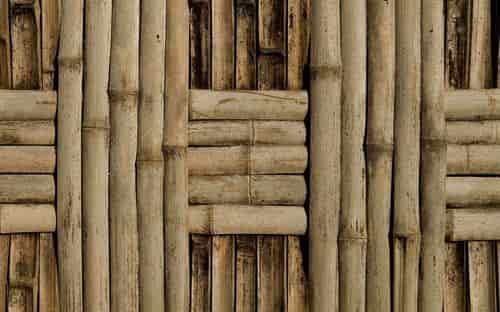
5. Beech Wood
Beechwood is very essential and majorly utilized hardwood in Europe. Its hardness, wear-resistance, strength, and excellent bending capabilities are properties for make it more popular than other types of hardwood.
Beechwood has been kept at high temperatures to get a unique red color.
Color: Reddish-brown
Source: Deciduous trees
Common Uses: Furniture, Cabinetry, Cooking utensils, etc.
Density: (700-900) kg/m3

6. Brazilian Mahogany Wood
Brazilian mahogany is denser than that of many African mahoganies. It can be utilized for preparing boats and different construction work use.
Color: Reddish Brown / Pale Pink
Source: Swietenia mahagoni trees
Common Uses: Boats, furniture, Musical instrument, etc.
Density: 12% moisture content ranging from 472 kg/m3 (< 40 years old) to 549 kg/m3 (> 40 years old).

7. Cedar Wood
Cedar Woods is used for preparing quality home furniture. It provides a great appearance, cedar is aromatic and natural insect-repelling wood.
Because of its durability quality, it is utilized for higher weather and external application. Its many unique features make it different from other wood.
The cedar is not a wood of a specific species. Rather cedar contains many species of wood. More than 15 cedar species are found in the cedar species.
They are very near to each other and they are unique in features of color, hardness, and rot resistance. They are utilized on the basis of their properties.
Its dark color, lightweight, and soft texture appear it beautiful and more demanding. It is utilized for fencing, decking, siding, trim, and many other applications.
Due to its aromatic properties, It is also utilized for clothing storage and oil. It is popular all over the world.
Color: Pinkish-red color
Source: Coniferous Trees
Common Uses: Fencing, decking, siding, trim, etc.
Density: 380 kg/m3

8. Celtis Wood
Celtis wood is a genus of nearly 60–70 species of deciduous trees, majorly known as hackberries or nettle trees, straight-grained but few times interlocked wood.
It is obtained with yellowish-grey heartwood and sapwood and a fine texture with a lustrous look. It is mainly used for interior joinery and trims.
Color: Pale brown to Pale yellow-brown
Density: 600–785 kg/m³ at 12% moisture content.

9. Conifer Wood
Conifer wood is obtained from coniferous or cone-bearing trees and is known as conifer wood. These trees are evergreen, the trees have needle-like leaves and make softwood timber.
Conifer wood is comparatively homogeneous in structure and has primarily tracheids, uniseriate xylem rays, and, in some genera, also axial parenchyma and epithelial cells around resin canals.
Color: Vibrant Yellow or Gold
Source: Coniferous trees
Common Uses: Boxes, crates, papers, etc.
Density: 480 kg/m³

10. Cherry Wood
Cherry wood has a color reddish–brown and it comes up with straight-grained wood that may hold pith flecks and tiny gum pockets that make random patterning.
Cherry wood is the best wood for carving because it is soft sufficient to be carved effortlessly but is also hard sufficient to hold its shape. Cherry wood also has an attractive, rich color that makes it a popular selection for the use of furniture, carvings, and other decorative items.
Color: Light pink to rich reddish-brown
Source: Cherry Tree
Common Uses
Types of Wood: Carving, furniture, etc.
Density: 630 kg/m³

11. Dahoma Wood
Dahoma wood has coarse interlocked grain, yellowish-brown streaky heartwood, and pale sapwood.
It is hard timber majorly for exterior utilize, such as exterior structural timbers, mining timbers, marine work, sleepers, outdoor furniture, etc.
Color: Whitish to Greyish-red
Source: Tall deciduous tree
Common Uses: sawing, furniture, etc.
Density: 0.73 g/cm3

12. Danta Wood
The sapwood is light brown with a pinkish tinge and is sharply derived from the heartwood, which is reddish-brown and has a lustrous surface. It’s a hard and strong wearing surface. It is majorly utilized for high-quality joinery, cabinetwork, benchtops, boat components, and decking.
Color: Light Brown
Source: Danta Tree
Common Uses: boat, benchtops, cabinetwork, etc.
Density: 750 kg/m³ when dried.

13. Douglas fir Wood
Color: Light Reddish Brown
Source: Pine Tree species
Common Uses: Plywood, flooring, cabinetwork, etc.
Density: 510 kg/m³
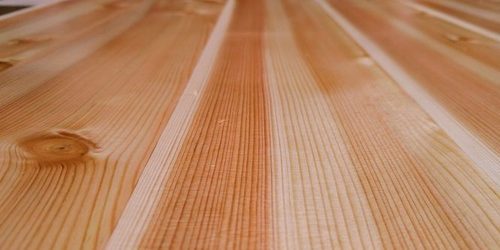
14. European Beech Wood
European beech or common beech is a deciduous tree similar to the beech family Fagaceae. It is grown in Europe and is a white to pale brown color hardwood. It is utilized for furniture, interior joinery, and flooring, and can also be used for plywood.
Color: Pale cream
Source: European BeechTree
Common Uses: Plywood, flooring, furniture, etc.
Density:752 kg/m3

15. Elm Wood
Elm is an attractive wood with heartwood colors that varies from light to medium reddish-brown and paler sapwood that is off-white in color.
Elmwood has an important growth ring pattern and interlocking wood grain with a course.
It is available in various colors and tones from cream to dark brown and its grain is similarly diverse, varying from straight to wavy.
The elmwood includes knots and burrs also it is very durable.
Color: White or grayish-white.
Source: Ulmaceae Tree
Common Uses: Constructing boats and farm buildings.
Density: 560 kg/m3

16. Greenheart Wood
The Greenheart is grown and available in Guyana. It has color-dense yellow or olive green to brown hardwood utilized for large construction such as bridges, marine, and freshwater construction. Greenheart is considered very durable and is also withstands many insect attacks. It’s also considered to be one of the best-suited woods for furniture.
Color: Pale olive green
Source: Laurel tree
Common Uses: Pilings for wharves and bridges and in ships.
Density: More than 960 kg/m3
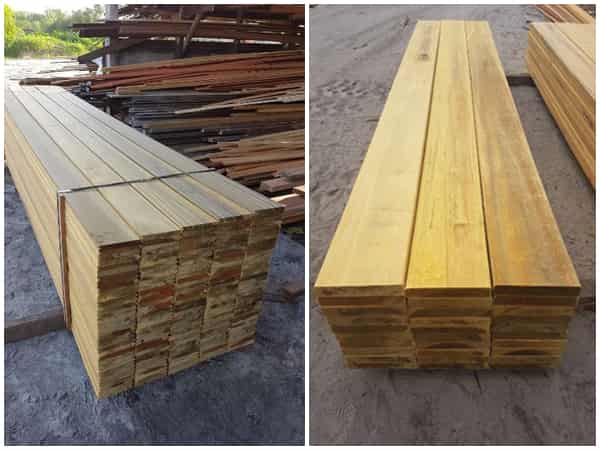
17. Iroko Wood
Iroko wood trees are grown in West Africa. It contains the color yellow-brown hardwood with a small grain that is irregular and interlocked. Iroko wood is generally used for interior and exterior joinery and for construction work.
A cheaper option to teak. It is also called African, or Nigerian, teak, but the iroko is not similar to the teak family. It is very durable.
Color: Yellow-brown
Source: Iroko Tree
Common Uses: Outdoor gates and infrastructure.
Density: 660 kg/m3

18. Khaya Wood
Khaya wood is a beautiful hardwood species from equatorial West Africa. It is similar in appearance and properties to Honduras Mahogany. It’s lighter in weight than Brazilian mahogany but has a coarser texture.
Color: Reddish-brown
Source: African mahogany
Common Uses: General beam, door frame, and shelving timber
Density: 812.07 kg/m3

19. Ligneous Wood
The ligneous wood materials are bagasse, bamboo, cereal straw, and flax or hemp shives, obtained from the ligneous plants. It is very cheap and affordable.
Color: Light Brown
Source: Ligneous plants
Common Uses: Cupboard, Kitchen Cabinets
Density: More than 0.35 g/cm3
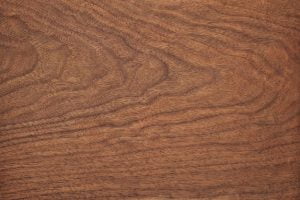
20. Maple Wood
Maple wood is very strong, and hard, and has a high resistance to knocks. After being stained, it has a light, translucent appearance. Maple is available in Canada and is one of the hardest species.
It is straight-grained and is distinguished by irregular patterning, which can contain fiddle back and bird’s eye patterns. It is obtained with light brown heartwood color and thin white sapwood that can be tinged with reddish-brown.
Color: White with some reddish-brown hues
Source: Acer Saccharum
Common Uses: Flooring, Cabinetry, and Kitchen Accessories.
Density: 689 kg/m3
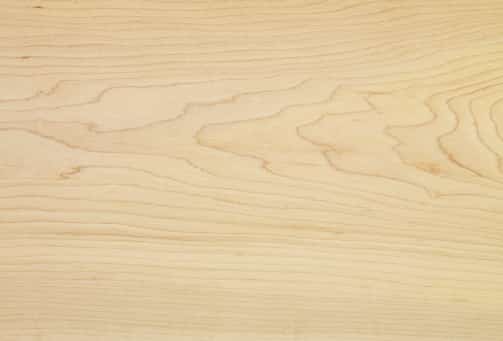
21. Meranti Wood
Meranti Wood is very flexible wood with different subspecies and sources. The meranti wood species are utilized for residential utilization and it is imported to the United States from Southeast Asia.
Meranti is one of the easiest hardwoods to deal with, as it easily cuts, and machines process it just as sands.
a. Dark red meranti and red lauan are medium to dark–red-brown hardwoods used for interior and exterior joinery and for plywood.
b. Yellow meranti are yellow-brown hardwoods, used for interior joinery and plywood.
c. Light red meranti and white lauan, are pale pink to mid-red hardwoods, used for interior joinery and plywood.
Color: Pale-red to reddish/brown
Source: Tropical Shorea tree species
Common Uses: Molding, furniture, structure, window, etc.
Density: 710 kg/m3

22. Oak Wood
Oakwood is utilized for construction timber. It is mainly straight-grained and colors vary from light to medium brown.
A few times, it is called red oak because its autumnal foliage has more flecks and a defined-grained finish.
Oakwood is very heavy, hard-wearing, and very strong, so used for flooring, paneling, decking, etc.
Color: Pale-red to reddish/brown
Source: Oaktree
Common Uses: Flooring, paneling, decking, etc.
Density: 897 kg/m3

23. Oak, European Wood
It is hugely grown in Europe and is a yellowish-brown hardwood utilized for furniture, interior, and exterior joinery, flooring, barrels, and fencing.
Color: Pale yellow-brown
Source: European Oak Tree
Common Uses: Furniture, interior trim, flooring, boatbuilding, etc.
Density: 720 kg/m³

24. Opepe Wood
Opepe wood is majorly grown and available in West Africa. It contains the color yellow to orange-yellow hardwood. It is utilized for heavy construction, marine, and freshwater construction, and for exterior joinery and flooring.
Color: Golden-yellow or orange-brown
Source: Nauclea diderrichii trees
Common Uses: Carving, interior trim, etc.
Density: 750 kg/m³

25. Okoume Wood
The heartwood of Okoumé contains a light grey-pink color, usually with a reddish shade. The sapwood is whitish-grey and normally easy to separate. It is only available in the forests of Gabon.
Okoume wood is softwood and has color salmon pink in color with a fibrous texture and an irregular grain that looks like light mahogany. Okoume trees mainly manufacture cylindrical logs, which are best for slicing and peeling and utilized to prepare veneer sheets.

26. Pinewood
Pinewood is an inexpensive and more easily found option than traditional hardwoods. It is one type of pale wood that can vary from yellow to almost red in appearance. Pinewood is highly capable to withstand wear and denting, especially in high–traffic areas.
Color: Creamy White Hue / Yellow
Source: Pine Tree
Common Uses: Making doors, windows, partitions, decks, railings, paneling, etc.
Density: 990 kg/m³
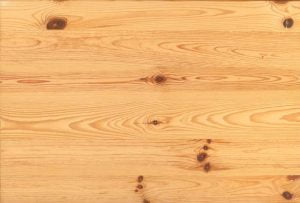
27. Pitch Pine Wood
A softwood pine has good strength and durability compared to major pines. The commercial-graded pitch pine is utilized for construction work.
Color: Reddish brown
Source: Pinus Rigida Tree
Common Uses: Pulpwood, crating, fuel, etc. Density: 590 kg/m³

28. Poplar Wood
Poplar wood is a species of wood most commonly used in the making of furniture, cabinets, wooden toys, plywood, etc. It is pale, light, and very soft. It is majorly utilized in joinery, furniture interiors, packing cases, and preparing plywood.
Color: Whitish or greyish
Source: Tulip Tree
Common Uses: Pulpwood, crating, fuel, etc.
Density: 500 kg/m³

29. Redwood, European
Pinus sylvestris is grown in Scandinavia, the Baltic States, and the Russian Commonwealth. It is also normally found in the UK, where it’s known as Scots pine or British pine.
It has colored a pale yellowish-brown to red-brown softwood. It is also utilized for construction, joinery, and furniture.
Color: Reddish-brown or Yellowish-brown color
Density: 520 kg/m³

30. Sapele Wood
It is a deciduous tree only during a dry season in West Africa, with leaves that can grow up to 10 cm in size. It is also found in and grown in South East Asia and is a medium reddish-brown hardwood with a marked stripe figure, used for interior joinery, furniture, etc.
Color: Golden to dark reddish-brown
Density: 640 kg/m³

31. Sitka Spruce Wood
Sitka Spruce wood is obtained with close and straight-grained wood with a high strength-to-weight ratio.
Color: Light pinkish-brown
Density: 347 kg/m³
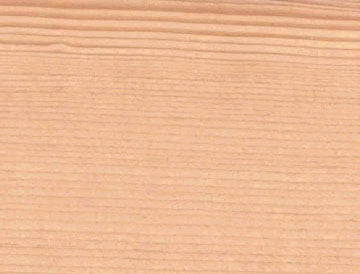
32. Southern Yellow Pine
southern yellow pine is utilized for interior and exterior construction as it’s good to work with and finishes well. It has minimum defects.
Color: Light yellowish-orange to dark reddish or yellowish-brown
Density: 670 kg/m³

33. Teak Wood
Teak wood is grown in Burma and Thailand. It has been hugely planted. It has the major color of golden brown hardwood, with dark markings that are utilized for furniture, interior, and exterior joinery.
Color: Tawny Golden
Density: 740 kg/m³

34. Utile Wood
Utile woods are planted and grown in West Africa. It has the color reddish-brown hardwood, utilized for interior and exterior joinery, furniture, and cabinetwork.
Color: Tawny Golden
Density: 740 kg/m³

35. Walnut Wood
Walnut wood has irregular waves and curls and rich dark tones that are made through a combination of rich dark heartwood and creamy brown sapwood. It is obtained with ranging grain patterns.
Color: Light brown to dark chocolate
Density: 689 kg/m³
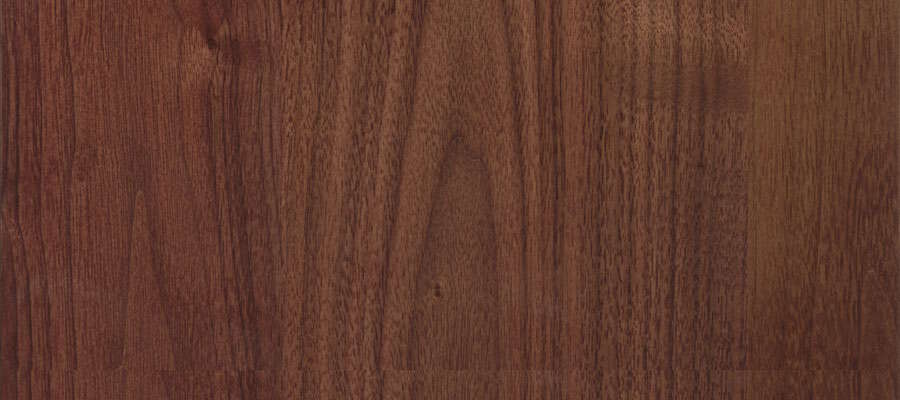
36. Western Hemlock Wood
Western Hemlock wood is majorly available in North America and is pale brown softwood, utilized for construction and joinery.
Color: Pale brown
Density: 420 kg/m³

37. Western Red Cedar Wood
Western Red Cedar is majorly planted in North America and is a reddish-brown softwood, utilized for roofing shingles, exterior cladding, etc.
Color: Pinkish Brown
Density: 330 kg/m³

38. Whitewood, European Wood
Whitewood is planted and grown in Europe, the Baltic states, and the Russian Commonwealth.
It’s a commercial grouping of white to pale yellowish-brown softwoods, utilized for construction, joinery, and flooring.
Color: White to pale yellowish-brown
Source: Silver fir (Abies alba) and Norway spruce (Picea abies).
Common Uses: Construction, joinery, and flooring.
Density: 480 kg/m³ when dried.

This was for the Types of Wood.
2. References1. Content Filter & Authenticity Checking Team, Dream Civil International (Our team checks every content & detail to maintain quality.) |

